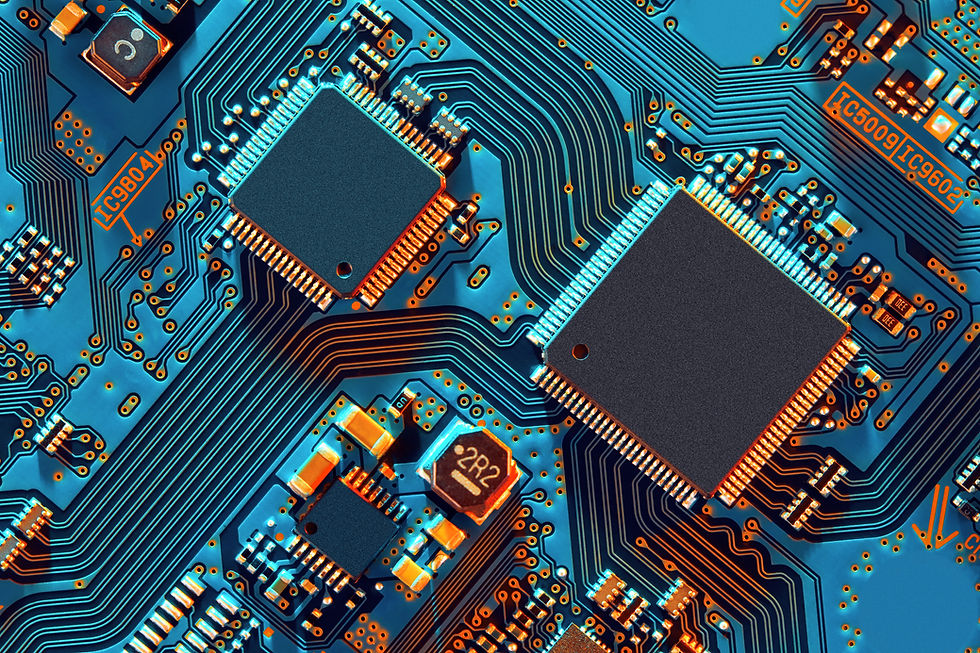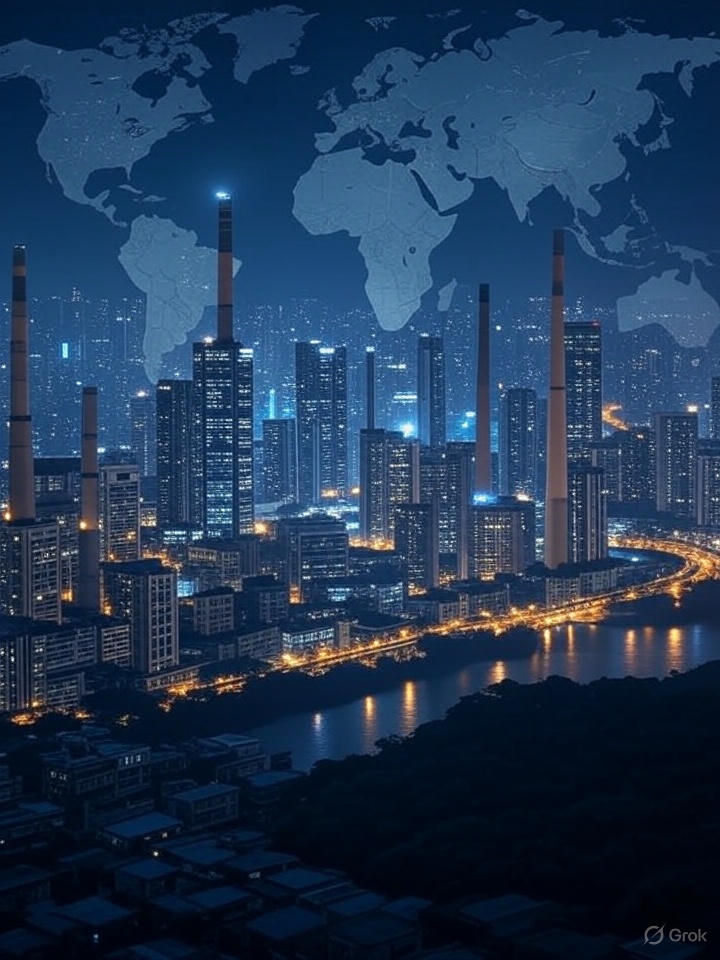Chips of Empire: India’s Semiconductor Dream, Thirst, and Global Games
- thebrink2028
- Sep 13
- 4 min read

Another app crash during a video call. It's not a glitch; it's the chip inside starving for power, a casualty of supply chains stretched thin across oceans. By noon, you're scrolling job alerts for "semiconductor engineer," heart racing because the ads promise 50% salary jumps, but the fine print whispers of 18-hour shifts in dust-choked cleanrooms. This is India's semiconductor attempt.
India is chasing semiconductor dream: from raw silicon wafers to finished chips powering everything from EVs to AI servers. But the chain breaks at half the links—design thrives, but fabrication is slow, leaving importers at mercy of global tremors. You feel this pinch when your new phone costs 20% more due to chip shortages, or when factories in your town idle without reliable components. News celebrates this as "self-reliance," but buried signals cry of vulnerabilities: water guzzling fabs are straining local supplies, skill gaps are forcing engineers abroad scorching India's edge.
India dominates chip design globally, with one in five engineers worldwide based here, but we are importing 95% of our needs, downplaying how this exposes us to blackouts in Taiwan or tariffs from China.
A southern state lab, once cutting-edge in the 1980s with processes rivaling Intel's, suffered a suspicious multi-point fire that halted progress for decades—sabotage, maybe, but official investigation disappears soon, burying it in bureaucracy while rivals like Taiwan built empires.
Geopolitical chess is rerouting supply chains to India, but experts spin it as seamless, hiding the raw scramble for rare earths and equipment monopolies.
A joint venture in a western state, greenlit for assembly and testing, faced relocation pressures from central planners favoring balanced growth, delaying local jobs but sparking ecosystem booms in design and packaging elsewhere. Families in industrial belts celebrated 20,000 new roles, but stories about power outages risking yields, a first-order hit to wages and community stability.
1960s-1980s (Policy & Tech Foundations): Early license-raj blocks foreign fabs; a northern lab pioneers advanced nodes, but fire derails it. Culture of self-reliance sparks, but geopolitics (Cold War isolation) halts growth.
2000s (Missed Incentives): Global giants eye India, but policy paralysis scatters deals to Asia. Tech fails as China subsidizes 37 new fabs(semiconductor fabrication plants) by 2025; India's culture shifts to services model over hardware.
2021-Present (Geopolitics & Surge): India Semiconductor Mission pumps $10B amid US-China tensions; iCET pacts lure Japan ($68B over decade). Tech leaps to 3nm design; India embraces "Aatmanirbhar," with 85,000 engineers training. By September 2025, first indigenous chips roll out at Semicon India event.
Taiwan commands 90% advanced logic via TSMC
US will hit 28% share by 2032 via subsidies
China floods with low-end fabs(semiconductor fabrication plants
India's $45-50B market (2025) trails but grows 19% CAGR, eyeing 10% of $1T global pie by 2030 if links solidify.
The Unknowns
News of new fabs (six by 2025, $76,000 crore outlay), but doesn't share the 5-7 year gestation and $10-15B per plant costs, skewing perceptions of quick wins.
Fabs devour 10 million liters of ultra-pure water daily—standardised in arid zones, but sparking protests over groundwater depletion, hitting farmers first. Decisions ignore this, inflating job promises (27,000 direct) while perspectives give a blind eye to environmental backlash, like in a Gujarat village where fab construction diverts rivers, forcing relocations in mass.
20% global chip designers are Indian, but 70% emigrate for lack of fabs, signaling talent drain and noise of "booming ecosystem."
Japan supplies half the world's semi-materials, but earthquakes there (like Taiwan's) could spike India's costs 30%, downplayed under "stable partnerships."
Historical Mohali fire's unresolved sabotage shadows trust, buried under revival news, spoiling investor confidence in IP security.
Signal vs. noise: Hype drowns these points because they demand action—upskilling, water policies, over photo-ops.
TheBrinks What Happens Next
Geopolitical de-risking from China persists, with US-India pacts accelerating $20B incentives by 2026; India's 20% design share holds among global $1T market.
Partial full-stack success possible, OSAT/assembly could scale to 20% global share by 2027 through Semicon Mission Phase 2 approvals, like recent $4,600 crore approvals. Pilot lines can be operational by mid-2026, but advanced fabs (sub-10nm) can be delayed to 2030 due to skill/water hurdles.
$18B investments (Tata-PSMC $11B, Micron $2.8B) will fuel assembly booms, creating 100,000 jobs; geopolitics (Trump-era diplomacy) will divert 10% Taiwan capacity to India. Chemical shortages (India imports 80%) will cap yields.
Early indicators: Watch fab water permits spiking local disputes (signal of strain); engineer migration rates dropping below 50% (talent retention).
In a dimly lit Chennai cleanroom, an engineer—Ramaranjana—soldiers through her night shift, etching circuits that could power the next Mars rover. Her hands tremble not from fatigue, but from knowing one quake in Asia could erase months of work. As dawn breaks, she texts her cousin in a Gujarat village: "Fabs changing everything—jobs, but our well's dry." Will Ramaranjana's chips light India's future, or will the chain snap first?
Challenge — $50 Reader Reward
What's the one under-reported supply chain chokepoint that could derail India's semi-con-dream by 2027? Reply within 48 hours; top insights will win.
Your awareness is the first step—by simply engaging with truths many fear to face, you're already part of TheBrink movement.
We'd love to invite you to subscribe to ensure you never miss our content. Many platforms and social media channels have been restricting or removing our posts, so subscribing is the best way to receive our stories directly in your inbox, unfiltered and uncensored.
Your sponsorships and donations fuel our mission to uncover hidden truths and inspire change. Click "Sponsor" or contact thebrink2028@gmail.com for partnership opportunities.
Thank you for being part of this journey.


